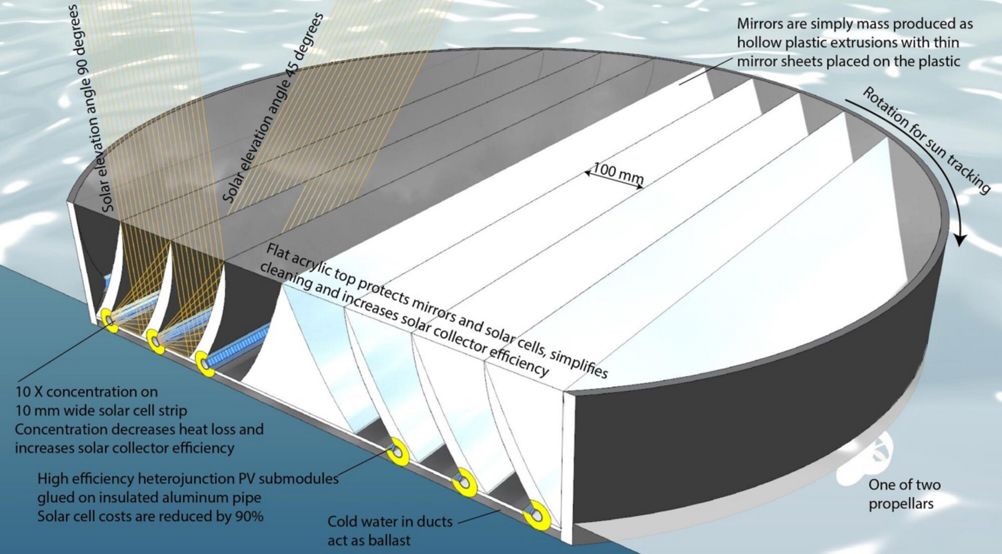Led by Norwegian research institute SINTEF, the TRINEFLEX project was conceived to aid heavy industry decarbonise through renewable PV electricity, while also offsetting industrial emissions through direct air capture (DAC). The floating plant will be equipped with both parabolic mirrors and ultra-efficient solar panels, as well as propellers so that the sun’s movement in the sky can be tracked. SINTEF plans to develop the plant in partnership with Norwegian company Svalin Solar, which currently manufactures a similar type of facility on a smaller scale.
Related content
“The concept is based on standard solar radiation technology, but it also uses mirrors to concentrate the sunlight and direct it onto ultra-efficient solar panels”, said Martin Bellmann, a research scientist at SINTEF. “We’re currently working on the design and upscaling of the Svalin Solar plant. We will soon be purchasing components and are hoping to construct a pilot facility this summer.”
“Initially, the plant will be tested on dry land as part of an existing carbon capture facility that SINTEF operates at Tiller, just outside Trondheim. This is where we will demonstrate the potential of the system.”
The heat generated by the concentrated solar energy will be captured using a heat transfer fluid flowing in pipes linked to the solar panels. However, it is believed that the heat will likely not be at a sufficient temperature to separate out CO2 from the ambient air, so SINTEF has said it will develop a heat pump to assist with the DAC process.

“The aim of the pilot is to demonstrate a solar-assisted carbon capture system that either entirely or in part generates the thermal energy needed for gas separation,” said Bellmann.
“Our main aim is to enable heavy industry to implement transition and achieve its sustainability goals by integrating renewable energy and digitalisation. Heavy industry operates with a relatively large energy requirement that will be met by solar energy from plants such as this that generate both electricity and heat.”
A total of 28 partners, including SINTEF, will participate in the four-year project.





Poll: Should the UK’s railways be renationalised?
The term innovation is bandied about in relation to rail almost as a mantra. Everything has to be innovative. There is precious little evidence of...